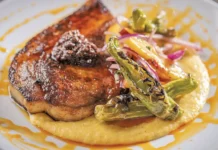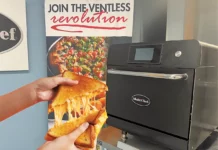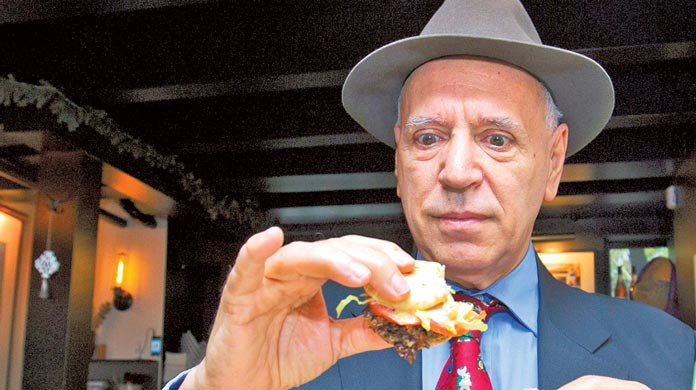
At the top of the list of challenges facing Metro New York restaurateurs is how to deal with their leases. We wanted to find someone who could look objectively at the issue from both sides of the table: restaurant operator and landlord. It was a clear-cut choice who had the expertise and vision to give us that read: Steve Cuozzo.
The Brooklyn, NY native has been a staple of the New York City newspaper beat for decades. Since 1972, he has been a staffer at the New York Post. He has held a variety of positions at the fabled tabloid. From promotion manager (where he set up a contest to “win breakfast with the baby elephant at the Bronx Zoo”) to co-executive editor, Steve Cuozzo has seen it all.
In 1998, Cuozzo took on the assignment as the Post’s restaurant critic. That review column has been replaced by his ongoing coverage of the restaurant industry. A year later, he added his Realty Check real estate column and before too long it became clear that restaurants and real estate in New York were in fact intertwined.
So with that connection now at the forefront of the restaurant industry’s battle for survival, Total Food Service sought out Steve Cuozzo to get his read on how the dust may settle.
Could you share a little bit about your background?
Sure, I’m 70 years old and I was born in Brooklyn and lived there until I was five. We moved out to the suburbs, and I was there for 17 years. In 1972, I moved into the city and have lived with my wife in a number of different places in Brooklyn and Manhattan. We live on the part of the Upper East Side which I call the Upper Cheapside and should not be mistaken for Madison Avenue.
What brought you to the New York Post?
My college mentor introduced me to his friend, a top newsroom editor at The Post. I’ve been here since 1972 and I’ve had a million different jobs and roles at the Post. I’ve been covering restaurants since 1998 and commercial real estate for 20 years. I also write on many other subjects including urban affairs, politics and sometimes lifestyle. Occasionally I get to eat grasshoppers which is what I’m doing in the photo.
As we enter an era in which landlords and their tenant restaurants are intertwined, what’s your read on that relationship?
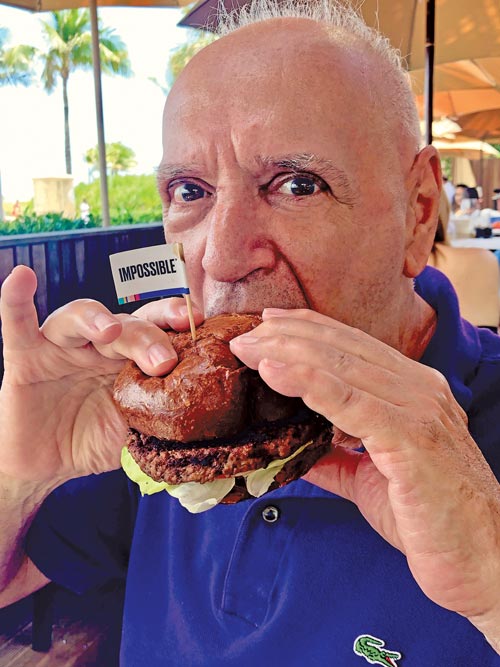
There’s a great synergy between the restaurant world and the commercial real estate world and obviously, they’re kind of mutually interdependent. Most people have no idea how much commercial real estate relies on restaurants.
There’s so much going on behind the scenes. Many landlords love restaurants and have stakes in the ones in their buildings. Very few people “get it”. If you read the drivel that appears on Twitter and some online publications or blogs, you simply don’t get a true picture. I can’t tell you how many times I read on Eater or Grub Street that another iconic restaurant has succumbed to a rent increase. But many of these ‘iconic’ places are bagel shops. The blame is placed on increased rent and the landlord. Of course, pre-pandemic, the rent is an issue in New York City especially and certainly has contributed to the demise of some restaurants. But the truth is that it’s usually the function of an overall change in the economy. Again, the reality is that few people are aware of the extent to which so many of the best, most popular, most famous restaurants in New York City are wholly or majority-owned by real estate dealmakers.
Can you share some examples of those partnerships?
The Russian Tea Room is owned by a real estate company. Seagram Building owner Aby Rosen has a piece of the Major Food Group restaurants in the old Four Seasons space.
Le Bernardin, considered by many to be the greatest restaurant in the country, wouldn’t exist had Equitable Insurance not helped launch it in the 1980s. Il Gattopardo, one of my favorite Italian restaurants, is largely backed by executive dealmakers at Cushman and Wakefield. And it goes on and on and on.
After following the industry for so long, what are some of the common characteristics that you see of those that succeed?
To begin, a restaurant must have enough cash on hand to see them through at least through an entire first year no matter what calamity strikes. The owners, managers, and in some cases the chefs need to know their customers when they walk in. One of the most precious things about going to a restaurant is being recognized or being known by the people at the front, or by a particular waiter or manager. No restaurant can really be great without that, even at the lower middle price points. There’s a misguided notion that if a customer walks into a new place, they treat you like hell. The idea is that house plays favorites with regular customers. Why in God’s name wouldn’t they if I’m giving a business a bunch of money? It can be overdone even though it’s long past the age of the snooty French restaurants. Today’s younger generation has no idea what that was even like.
What’s your read on the level of restaurant service that we see today?
The old days were all about fawning attention to regular customers and celebrities. And in some cases, total disregard for the unknown customer. Indeed, there were restaurants where they treated first-timers as chopped liver. But, a new brand of disrespect has been created by the economics of the business. Higher rents, food and labor costs compelled owners to cram in as many seats and bodies as possible. That is, before Covid. The crazy thing was, some people in New York enjoyed it. It got to the point where I’d walk in and predict whether a place would make it just based on how the room was set up. If tables weren’t all on top of each other, forget it.
What about this idea that the most important thing now is not how a dish tastes but what the picture looks like on Instagram?
That was fortunately starting to wane a little bit prior to the virus. I was never able to understand how a chocolate mousse on social media could be so influential in restaurants’ fortunes. The horrible phenomenon encouraged chefs to deliberately create things that would photograph well, regardless of how they tasted – and sometimes whether they even existed. A place called Atera got lots of mileage out of an online photo of squab with a scary-looking foot attached even though it wasn’t on the menu. Fortunately, prior to COVID-19 it simply wasn’t hip anymore to take pictures to post. But it’s appalling to recall how ‘influencers’ and silly images could make an ordinary restaurant seem important.
When you started in ‘98, we were in the middle of the emergence of celebrity chefs. What’s the chef’s role today?
We’ve always had celebrity chefs like André Soltner at Lutece in the ‘70s. There were even celebrity women chefs going way back. The phenomenon didn’t accelerate to warp speed until the advent of the Food Network. Everybody became a star from Bobby Flay, David Chang, Mario Batali. They were young, hip and cooked all kinds of cuisines. In my view, it’s a crummy trend because the more time a chef is doing TV or writing books, building a brand if you will, the less time they are spending cooking. Go back to France in 1930, ‘40s and ‘50s and everybody knew who the Michelin star chefs were. But again, they often were not in their kitchens or even keeping an eye on them because they were off building and attending to the mini-empires they were building.
What are some of the characteristics of the chef that can do both?
It’s interesting that even with all of this brand building and expansion to Las Vegas, Atlantic City and wherever, that the great chefs somehow find a way when they are in New York to be in the restaurant. I’m always astonished when I go to a Jean-Georges (Vongerichten) or a Daniel Boulud restaurant, they seem to always be there. I know that Marcus Samuelsson has Red Roosters all over the country and in Sweden, and yet he always seems to be at the HARLEM original. I can’t remember a trip to Marea when Michael White didn’t come over to say hello. Popping in for five minutes doesn’t really take that much time but what an impression it makes.
One thing that enabled chefs to build far-flung operations is the sheer number of talented chefs they now have to support them. Ambitious young cooks trained at the CIA gave the “name” toques a talent pool to draw on and they can turn out dishes that taste exactly as if their bosses cooked them.
What do you make of the Danny Meyers of the world, entrepreneurs that don’t cook but have built empires?
I mean they’re all different and certainly Danny is in a league of his own. You have guys in New York like Jimmy Haber, Phil Suarez and Stephen Starr, who have brought us mostly wonderful restaurants with a variety of cuisines. They’re great but before them there was my friend Steve Hanson. He was a true pioneer. He established a template for B.R. Guest Hospitality by using the model that Rich Melman had used in Chicago for Lettuce Entertain You. He began with The Coconut Grill sort of a cheeseburger place on the Upper East Side. He then rapidly expanded with a spectacular jumbo Asian restaurant, Ruby Foos, which inspired others. They were Las Vegas-style and sized restaurants in New York that were actually designed by a Hollywood set designer: David Rockwell. And by the way, Steve’s a helluva home cook.
What was the key to the real estate success that enables operators like Meyer and Hanson to grow?
Both of those guys looked at real estate as the key to a restaurant’s success. Hanson said, “Every one of my restaurants starts as a real estate deal.” Danny told me that if you’re paying up to a certain percentage of costs on your rent then you are working for yourself, above that, you’re working for the landlord. But as important as it is to have an affordable lease, you still need to offer customers good food, professional service and a perception of value.
What has enabled some of these chef/operators to succeed across multiple cuisines?
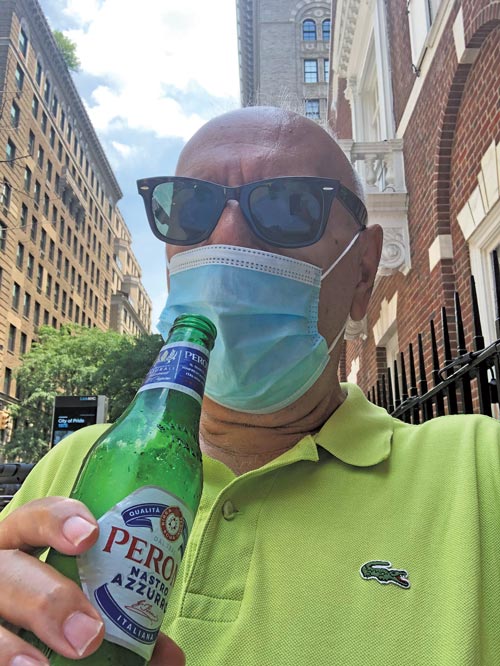
Even if they aren’t professional chefs, they all love food. And, when you love food and you travel you experienced many different, tastes from around the world. It’s interesting that guys like Jean-Georges have developed the ability to succeed in an extraordinary range of cuisines from Asian and Japanese to Italian and French. All of these super entrepreneurs know how to hire people. It’s a funny thing because the talent pool is even in New York, so limited for the most crucial people like top managers. Danny Meyer knows how to do this. They find them and because the business is successful, they’re able to pay proper salaries and provide benefits which lesser competitors are not.
Can takeout and delivery save the restaurant industry?
Everybody’s in the process of finding out. I’ve interviewed many chefs and owners over the last five months, and everyone said that they’re building a more sophisticated takeout and delivery model than they had previously.
Frankly, they have had to in order to survive. Early on in COVID-19, it was all they had. They quickly learned how to manage their customer data, set up better menus online, all to ensure swift and safe delivery.
How has the pandemic changed how the industry looks at outdoor dining?
It was great fun for everybody and created what can only be described as the “Wild-Wild-West”. It thrived even after indoor eating was allowed at 25 percent capacity. The troubling thing is that the outdoor service is unequally distributed. It was very random depending on how much sidewalk frontage a restaurant has to serve legally. I never thought I’d love eating in the street. Maybe it was the cars and trucks or the beggars, the bands or the 200-pound dog that liked the sushi on my plate. This summer changed everything. Whether it was a table on the sidewalk or under a tent, I couldn’t get enough. Maybe it was the deprivation after months of not having any restaurants or maybe a shared spirit that we’re all in this together. I love it, and it’s fun. The reality is for many restaurants, outdoor dining has enabled them to serve more customers than they ever did before.
What are the challenges that New York City’s restaurants faced before COVID-19 and will continue to face post-Pandemic?
I love restaurants and have many friends in the business. I’m fully aware of the challenges that they face, all the time, labor, unions, taxes, and minimum wage. I’ve always believed that the problem with the New York City restaurant industry is that they’re just too damn many seats period.
I remember when the smoking ban went into effect when Mike Bloomberg was mayor. I can’t tell you how many stories I read and I might have written one myself about the impending death of the restaurant industry. Because who in their right mind is going to go to a restaurant and not be allowed to smoke at all? Well, look at what happened, the restaurant industry became richer than before.
What’s your read on where we are headed?
I don’t understand how they can say that they’re on the brink of extinction. If those guys made more money outdoors now than they ever did, hopefully, they squirreled the cash away for the winter. Many of these new outdoor cabanas and igloos are almost like eating indoors which will hopefully extend the outdoor dining season.
Can the industry survive without a bailout?
Impossible to know, I mean obviously they’re lobbying as hard as they can for federal relief. There was the Restaurant Act bill that has been held up by Mitch McConnell.
Both Trump and Nancy Pelosi wanted it but McConnell for some reason held it up. The PPP helped a million restaurants with payroll and rent. The simple, profound, and elegant answer to that question is, who knows. Because it depends on the duration of the dining restrictions and of course the dispersal of the vaccines. When the dust does settle, we’re going to be missing some restaurants that we love. Is that the same as the death of the industry, no.
What should the restaurant industry be looking for from a new mayor going forward?
Safe streets period. Ask any restaurateur, the pandemic brought way too much crime to the streets. Of course, there are a million other variables led by overregulation. Every restaurant gets hassled by 88 different city departments: the health department, the buildings department, the fire department.
You’ve made your living talking to and covering many of New York’s top landlords. Are we going to be looking at restaurant leases that are based on a percentage of sales going forward?
Smart landlords and smart restaurant operators have come to terms with the reality of what’s going on. We are going to see the conventional lease, replaced with a hybrid lease where the restaurant pays a percentage of the gross to the landlord. It will include an escalating sliding scale as things normalize within a year or two and could convert to what was a conventional lease, more like a partnership. For instance, the popular Greek restaurant Avra plans to launch a huge new place next year on Sixth Avenue at 49th Street even though Midtown is very quiet now. They wouldn’t share specifics, but it’s a hybrid lease with lots of revenue-sharing clauses and contingencies that will vary over time.
If you put your real estate hat back on, does that mean you have bankers who lend to those landlords and understand the need for a new reality?
Different question. There are plenty of lenders who don’t care. People don’t realize that some landlords are under terrible pressures of their own with taxes and their lenders wanting their money. Some lenders will give the landlord a certain amount of latitude and some will not. In some cases, the property owner is tied up in knots by lenders. That makes it very difficult for them to pass any sort of concession on to their tenants, in the form of abatement, forgiveness, and most importantly lease restructuring.
In addition to the change in leases, what will a comeback look like?
Menus will change because people’s tastes have changed after what will be almost a full year of eating on the fly – meaning with takeout and delivery or eating outside depending on the weather. But don’t bet against this industry. There are people who love working in restaurants. They love food and the buzz of interacting with their customers. The culture of the business is ultimately what will see the industry through this nightmare.
Would you ever invest in a restaurant?
Never, not a chance. You’re better off with a racehorse. Nonetheless, there is an allure to the business that continues to attract people’s money and ambition. We all read that only one in 10 new restaurants are still with us 10 years from now. But if you have the money, you can have a lot of fun with owning a restaurant.
The other problem is that prior to Covid-19, the city had way too many restaurants and seats to fill. Then, if you started small, you quickly learned that you were competing with large restaurant companies like Danny Meyer’s Union Square Hospitality Group, The Tao Group and The One Group. They know how to hire and keep the best people. It didn’t matter that some newcomers had tons of hedge fund money to play with. You could tell early on that they didn’t have the gift of communicating with their customers. You’d walk in and see revolving-door hosts at the front and that’s deadly for a restaurant.
The sad truth is that a lot of people get into the restaurant business having no idea what they’re in for. In some cases, they don’t care, it can be somebody so rich who wants to show off their place to their friends or want to hang with celebrities. Those sorts of places don’t usually last very long. But even with all the cry-baby stories, I know a lot of people have made a lot of money in restaurants. When it gets cold this winter, many of them will be sailing in the Caribbean!
All photos courtesy of Steve Cuozzo. To read Steve Cuozzo’s articles in the New York Post, visit their website.


















